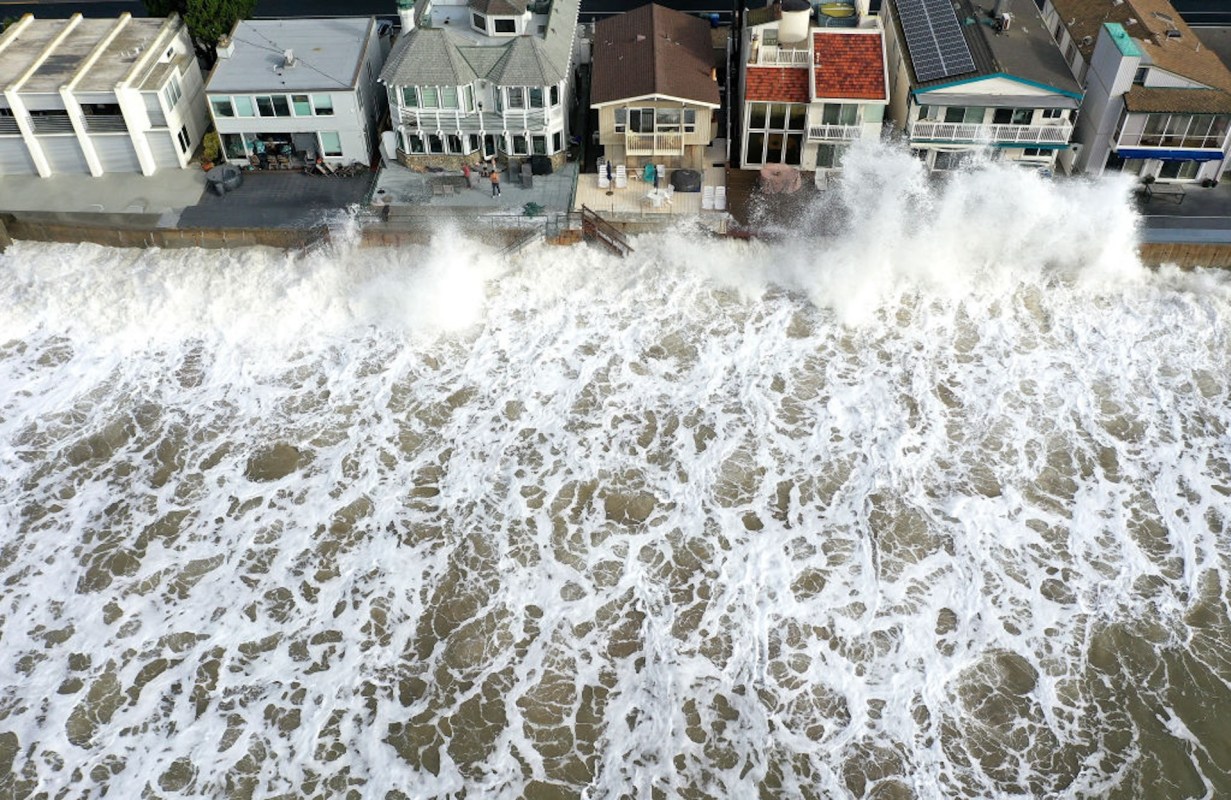Fierce storms have pummeled California for weeks, but scientists warn that the worst may not be over yet.
California winters are famed for dramatic ocean swells, but thanks to the combined effects of El Niño and the effects of Earth's rising temperature, the waves crashing into the coast could prove catastrophic.
What's happening?
In late December 2023, weather forecasters predicted that waves would reach up to 20 feet high — as tall as some two-story buildings — in Ventura, California.
Some rogue waves (which tower at more than double the height of other surrounding waves) made it over the sea wall, flooding the surrounding streets.
Ventura's fire service rescued eight people from the waterlogged San Pedro Street and Seaward Avenue, some of whom were admitted to the hospital, and two surfers, the Ventura County Star reported.
Multiple agencies also searched for a fisherman who fell overboard from a boat — miraculously, he later walked out of the water, as the Star reported.
The weather's severity has been attributed in large part to El Niño, a recurring climate pattern that scientists say was due this year.
El Niño occurs when surface waters are warmer than average in the eastern tropical Pacific Ocean, triggering higher sea levels, storms, and high-tide flooding in California. Rogue waves may also intensify during El Niño, compounding floods.
The situation in California on certain days can also be affected by seasonal king tides — the highest tides of the season driven by the gravitational pull of the moon.
"If there are large waves those days, we may see more flooding," Laura Engeman, a coastal resilience specialist with California Sea Grant, told USA Today.
Why do the effects of El Niño matter?
Soaring global temperatures are already affecting sea levels, but El Niño could push waters even higher.
Some scientists have suggested that rising global temperatures and changing weather patterns may be increasing instances of extreme El Niño events, worsening storms, droughts, and hurricanes in places.
According to the United Nations, El Niño caused thousands of deaths and $96 billion in damage in 1997-1998.
This year's El Niño was anticipated to be another big one, with some fearing it could bring more devastation to coastal communities. Erosion is a particular worry for beachfront homes in California.
One study by the U.S. Geological Society found that up to 75% of California's beaches could disappear by the end of the century, with the encroaching sea threatening cliff-side houses.
What's being done about El Niño?
El Niño, as a naturally recurring weather event, cannot be forestalled, but the State of California is taking several precautions against flooding.
San Francisco is spending $5 billion on strengthening its sea wall, while $180 million will help to elevate Highway 37 by 30 feet, keeping it above projected sea levels.
Other potential shorter-term solutions include trucking in the sand and building barrier islands off the coast, which could reduce the force of incoming waves while also providing habitats for local wildlife.
Join our free newsletter for cool news and cool tips that make it easy to help yourself while helping the planet.









